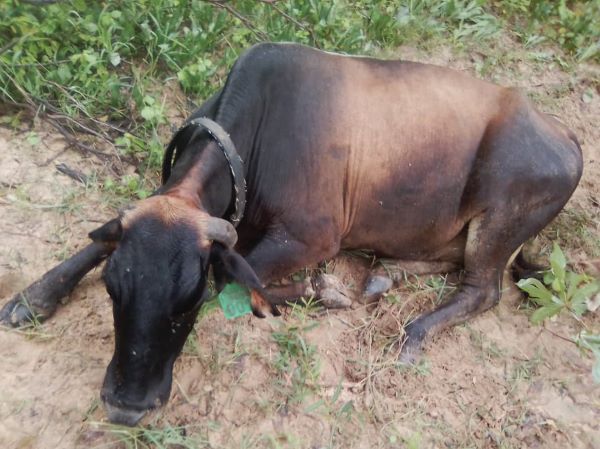An unexpected discovery has led researchers from the International Livestock Research Institute (ILRI) in Kenya and the Roslin Institute at the University of Edinburgh in Scotland to identify a genetic marker that accurately predicts whether an individual cow is likely to survive infection with East Coast fever—making possible breeding programs that could improve the livelihoods of millions of smallholder farmers.
According to the ILRI, the severe cattle disease, East Coast fever. is caused by a Theileria parva parasite and transmitted by ticks, causing a kind of leukemia.
It said it kills a million animals a year in the 13 African countries where it is endemic—that is one cow every 30 seconds. Those losses cost an estimated US$300 million annually, and can devastate the livelihoods of smallholder farmers.
“If the cattle are susceptible, without treatment you can lose 100% of your herd in two or three weeks,” says ILRI’s Phil Toye.
“Because it doesn’t affect wealthy countries, there has historically been limited funding for research into the disease.”
A vaccine for East Coast fever exists and usually gives cattle lifelong immunity.
However, ILRI says manufacturing it is time-consuming, and it costs 10 to 20 times more than other common livestock vaccines.
“The other option is regularly dipping animals in acaricides—pesticides that kill ticks—but this is also labor-intensive, polluting, and in some places farmers have to dip their cows more than once a week. We’re struggling to control this disease,” Toye says.
In 2013, an ILRI-Roslin team conducted an experiment at the Ol Pejeta Conservancy in Kenya to test how well the vaccine worked when indigenous cattle grazed near buffalo, which also carry a form of East Coast fever. Out of twelve vaccinated animals, nine of them died from the disease.
Nine of the twelve unvaccinated control animals died too. Tatjana Sitt, a post-doctoral scientist working on the project, just happened to check their pedigree.
“She saw that the three ones that survived all had the same sire. We thought, is that just a fluke? Or is this something that’s really worth following up? It turned out to be a very serendipitous observation,” Toye added
Now, in a new paper published by Roslin’s David Wragg, ILRI’s Annie Cook and other team members has analysed the DNA from this one hardy bovine family in the context of clinical data from the field studies and located a genetic marker that signals tolerance for East Coast fever.
“For breeding, it doesn’t actually matter. You just need a way of saying, ‘This animal is a good one to breed from, because its offspring are likely to survive the disease.” Wragg said.
Further research is needed to pin down the exact gene (or genes) responsible and their mechanism of action will potentially enable scientists to edit the DNA of cattle to make them disease tolerant.
“More research is also needed to ensure there are no unintended side-effects associated with tolerance to the disease—for example, in humans, tolerance to malaria is associated with sickle-cell anemia, which causes other health problems. In addition, finding out more about the genetic mechanism could also help to advance leukemia research in humans, Toye says.
“If this genetic trait really is as effective as we think it is, and we can get animals out there expressing it, and there’s no major downside to it— it will provide a sustainable and cost-effective way to combat this major disease,” he added.








